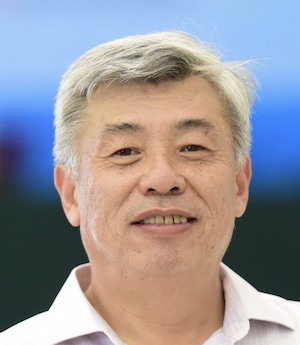Xiang-Dong Fu, PhD, received his PhD in biochemistry from Case Western Reserve University in 1988. He was a postdoctoral fellow at Harvard University from 1988-1992. Dr. Fu joined the faculty of the University of California, San Diego (UCSD) School of Medicine in 1992, and since 2018, he has been a Distinguished Professor of Cellular and Molecular Medicine at UCSD. He was a Searle Scholar (1997-2003), a Leukemia and Lymphoma Society Scholar (2000-2005), and an Elected AAAS Fellow (2016). Dr. Fu contributed to the founding of the SR protein family of splicing regulators and discovered the SRPK family of splicing kinases. He elucidated mechanisms for specific regulatory RNAs and RNA binding proteins to function in transcription, pre-mRNA splicing, and translational control during development, cell fate determination, and diseases. His team recently developed a novel strategy for in situ trans-differentiating astrocytes into dopaminergic neurons to potently reverse a Parkinson’s disease model.
Co-PI (Core Leadership)
Xiang-Dong Fu, PhD
Westlake University
Xiang-Dong Fu, PhD, received his PhD in biochemistry from Case Western Reserve University in 1988. He was a postdoctoral fellow at Harvard University from 1988-1992. Dr. Fu joined the faculty of the University of California, San Diego (UCSD) School of Medicine in 1992, and since 2018, he has been a Distinguished Professor of Cellular and Molecular Medicine at UCSD. He was a Searle Scholar (1997-2003), a Leukemia and Lymphoma Society Scholar (2000-2005), and an Elected AAAS Fellow (2016). Dr. Fu contributed to the founding of the SR protein family of splicing regulators and discovered the SRPK family of splicing kinases. He elucidated mechanisms for specific regulatory RNAs and RNA binding proteins to function in transcription, pre-mRNA splicing, and translational control during development, cell fate determination, and diseases. His team recently developed a novel strategy for in situ trans-differentiating astrocytes into dopaminergic neurons to potently reverse a Parkinson’s disease model.


